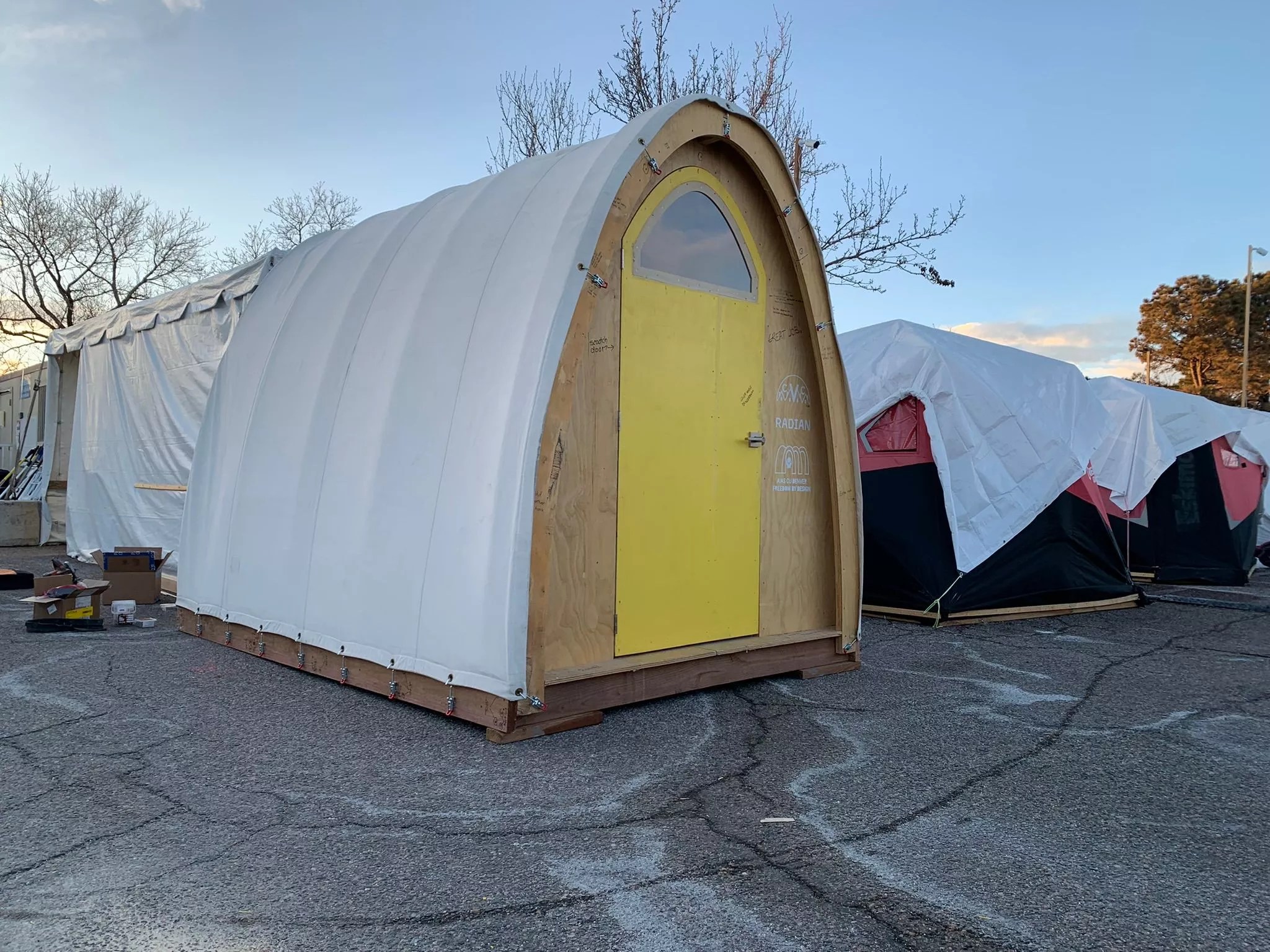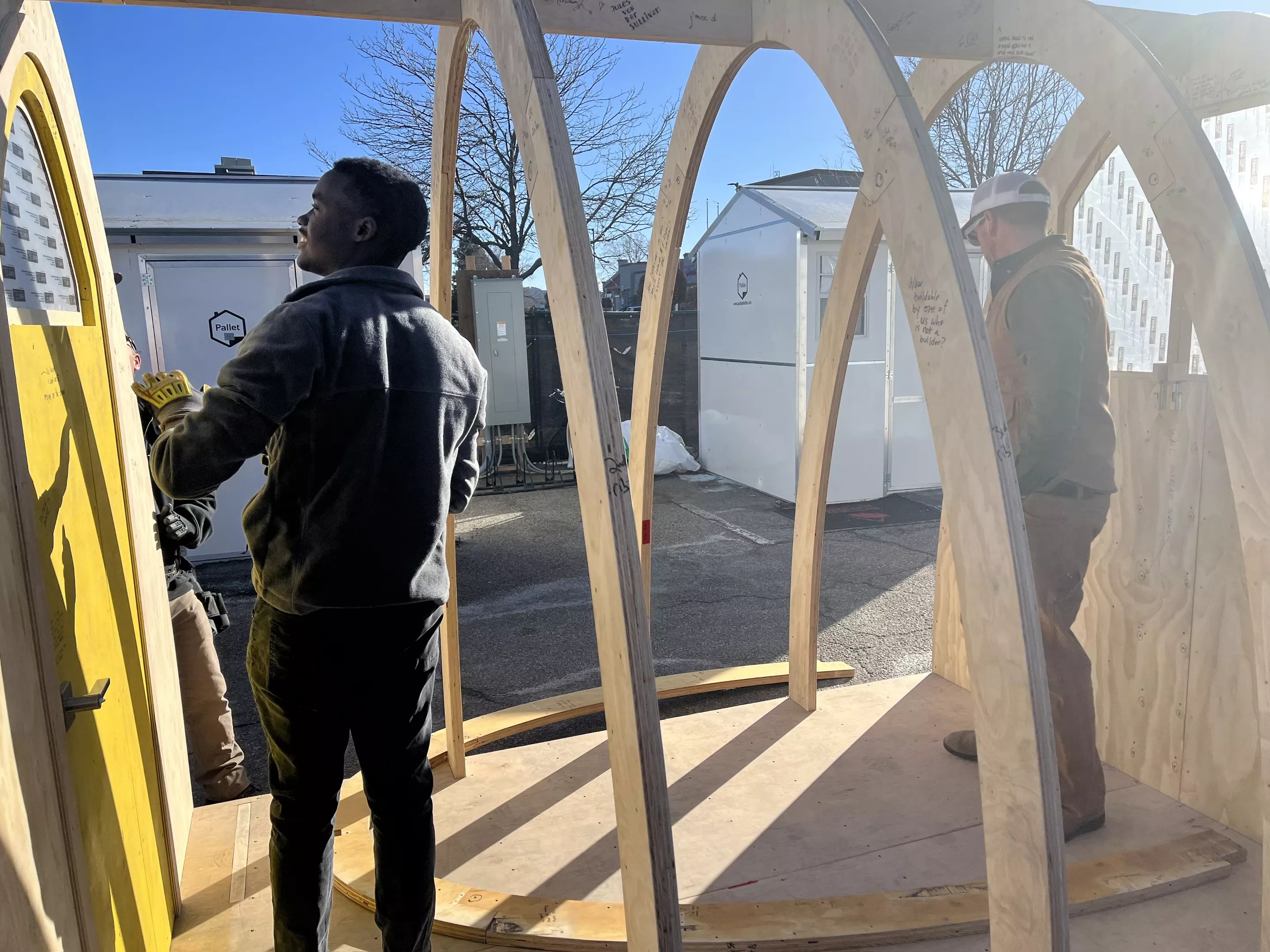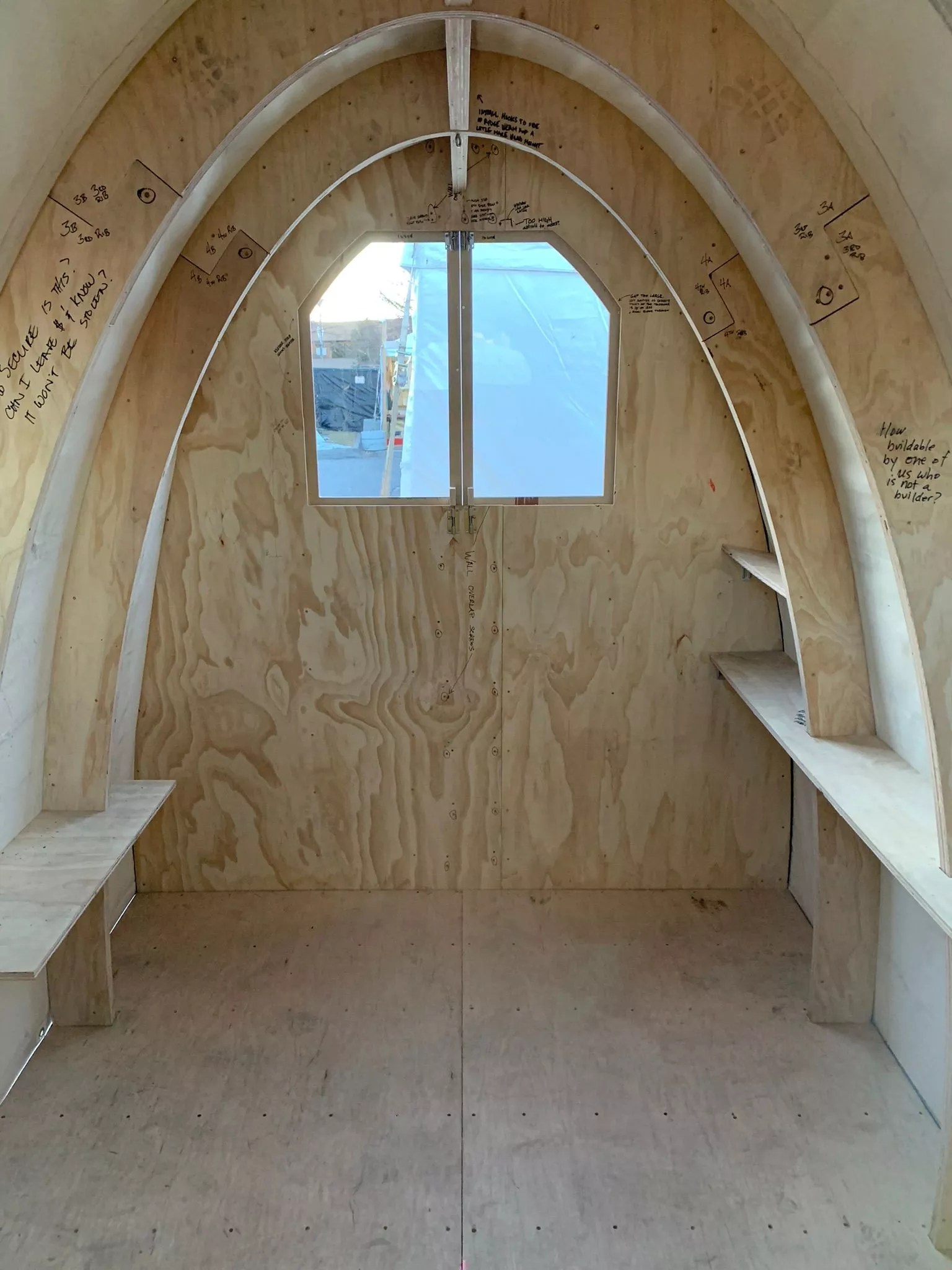
Courtesy of Richard McSwain

Audio By Carbonatix
A year ago, architecture students at the University of Colorado Denver built a structure that they thought could replace the ice-fishing tents at safe-camping sites for people experiencing homelessness in the Mile High City.
But first they installed the wood-and-canvas structure – which looks like an especially tall tent – outside on the campus to experience the Colorado elements and also collect feedback from students and faculty members. “To have a full-size structure to make comments on was kind of a fun engagement method for people to get involved with it,” says Richard McSwain, the former president of CU Denver’s chapter of Freedom by Design, a nonprofit community-service program for architecture students.
Among other things, comments noted that the window was too high and the door didn’t open and close perfectly.
After receiving that input, McSwain, who graduated from the master’s architecture program last May, and other members of Freedom by Design made some tweaks to the prototype, which had held up well in the outdoors. And now the structure is getting its second major test: a stint at the safe-camping site at the Arie P. Taylor Municipal Center, at 4635 Peoria Street.
“Residents can check it out. Staff can check it out. And they can give their feedback,” says Grey Waletich, senior director of the built environment for the Colorado Village Collaborative, which runs Denver’s three safe-camping sites. “It’s really fun to work with students and leverage their innovative ideas and make it work for us, too.”
Denver has had safe-camping sites since December 2020, following a decision by Mayor Michael Hancock to approve the concept as a temporary solution to deal with homelessness during the pandemic. But even as the emergency has subsided, the sites have remained, and Denver City Council has continued supporting them.

CU Denver students installed the structure on a recent Sunday.
Conor McCormick-Cavanagh
The CU Denver students designed the structure to be more comfortable than the tents, which lack insulation. The canvas that wraps around the wooden skeleton of the prototype has a layer of insulation, which helps retain heat during cold winter nights; the wood also retains heat.
“It would definitely be warmer than a tent,” says Wilber Kyagulanyi, an undergraduate architecture student at CU Denver and a member of Freedom by Design.
The students say that the units would be a good investment for the CVC, which is funded mainly by City of Denver dollars. While the materials in each structure total just under $2,000, about four times the cost of an ice-fishing tent, the tents have a much shorter life span.
Economic feasibility is “something we’re going to be testing out,” Waletich says.
Working on the project, Kyagulanyi has learned about thermodynamics, the importance of materials, and zoning codes for tents and pallet shelters; he’s also studied those subjects in the classroom. That helped him design an element at the front of the structure that allows the door to open and close properly. “It’s been amazing. It’s been mostly educational,” Kyagulanyi says.

The inside of this structure is warmer than the interior of a tent.
Courtesy of Richard McSwain
The Freedom by Design students recently set up the structure at the safe-camping site, placing it near tents and pallet shelters. Site residents and staffers looked on with curiosity as the students worked for a few hours to get the structure fully installed. “Four people – it’s easy to maneuver it and set it up,” notes McSwain.
Although residents can study the structure, they won’t be able to stay in it. “We’ll be going through a process with the city to make sure we’re meeting all of their code rules,” says Waletich, who adds that since the structure is soft-sided, it “allows for a little more flexibility” with city rules.
McSwain is no longer at CU Denver – he runs his own design and build company, McSquared – but he still hopes to see the Freedom by Design project succeed and become the archetype structure for safe-camping sites in Denver.
“To have a proving ground for this is the primary starting point to make sure it works,” he says.